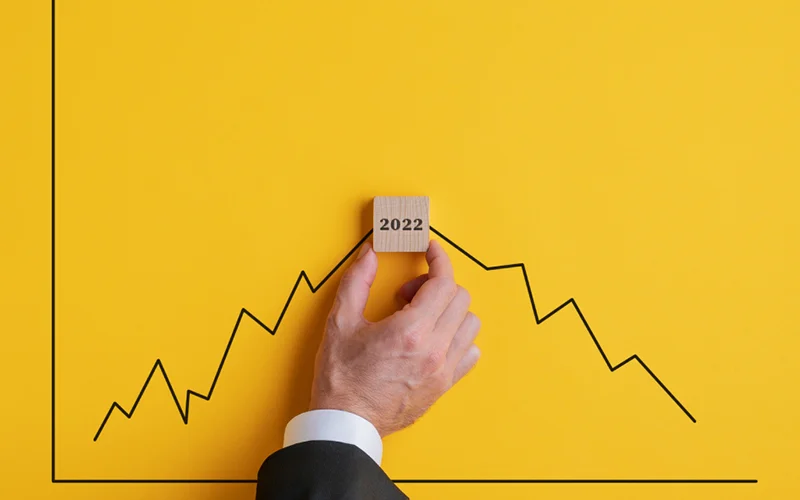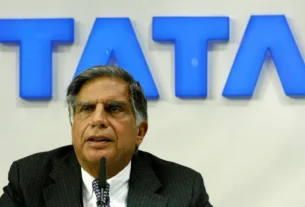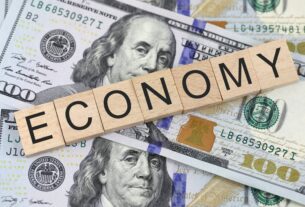The term “economy” is often encountered in daily conversations, news reports, and academic discussions, but what does it truly entail? At its core, an economy refers to the system by which goods and services are produced, distributed, and consumed in a society or country. It encompasses everything from the smallest individual transactions to large-scale industrial processes, all of which contribute to the overall financial health and development of a region.
Understanding the Economy: A Complex Network
An economy is a complex network of interconnected activities involving production, distribution, and consumption:
- Production: This includes all the processes involved in creating goods and services, from agriculture and manufacturing to service industries. Companies produce everything from food and clothing to cars and technology, adding value to raw materials.
- Distribution: Once goods and services are produced, they must be distributed. Distribution involves transportation, logistics, and retail sectors that ensure products reach consumers.
- Consumption: Consumption is where individuals or businesses use goods and services. This can be personal use, as in food and clothing, or industrial use, as in materials needed for further production.
Types of Economies
Economies can vary significantly depending on how production, distribution, and consumption are managed:
- Traditional Economy: These are typically rural and rely heavily on customs, history, and community-based practices. Production is usually for direct consumption or barter, and there is limited reliance on currency.
- Command Economy: In a command economy, the government has significant control over resources and production decisions. This model is often seen in socialist or communist nations, where the state decides on production, distribution, and pricing.
- Market Economy: A market economy is driven by supply and demand, with minimal government intervention. Businesses and individuals decide on production and consumption based on their interests, leading to competition, innovation, and diverse product options.
- Mixed Economy: Most modern economies are mixed, combining aspects of command and market economies. The government intervenes to regulate industries, provide public goods, and address issues like inequality while allowing market forces to operate freely.
Key Economic Indicators
Several indicators are used to measure an economy’s health, performance, and growth, including:
- Gross Domestic Product (GDP): The total value of all goods and services produced in a country, GDP is one of the most important economic indicators.
- Unemployment Rate: This measures the percentage of the labor force that is unemployed and actively seeking work. High unemployment indicates economic distress, while low unemployment often signals a thriving economy.
- Inflation: The rate at which prices for goods and services rise, inflation is closely monitored to maintain purchasing power.
- Interest Rates: Set by central banks, interest rates impact borrowing costs, consumer spending, and investment. Low rates encourage borrowing, while high rates can slow economic activity.
The Role of Economic Policies
Governments and financial institutions, such as central banks, create and implement policies to guide economic growth, manage inflation, and stabilize the economy. Fiscal policies (taxes and government spending) and monetary policies (control of the money supply) are key tools used to influence the economy. By adjusting these levers, governments aim to promote sustainable growth, control inflation, and maintain employment levels.
How Economies Evolve
Economies evolve over time, moving through different stages of development influenced by factors such as technological advances, resource availability, population growth, and government policies. Generally, economies are classified into four main stages:
- Agricultural Economy: Historically, societies began as agricultural economies, with a focus on farming, hunting, and basic trade. In these economies, wealth was tied directly to land and natural resources, and family labor was the primary workforce. Surpluses of food and resources led to simple bartering and the beginnings of commerce.
- Industrial Economy: The Industrial Revolution, starting in the 18th century, marked a major shift to industrial economies, driven by manufacturing, technology, and urbanization. Factories emerged, producing goods at unprecedented scales. This era introduced concepts like wage labor, mechanized production, and expanded international trade.
- Service Economy: In the 20th century, many industrialized economies shifted towards a service-based model, focusing on sectors like healthcare, education, finance, and technology. In a service economy, the emphasis moves away from manufacturing physical goods toward providing expertise, support, and information.
- Knowledge or Digital Economy: The modern era, influenced by rapid advancements in information technology, has led to the rise of a knowledge economy, sometimes also referred to as a digital economy. This stage relies on intellectual capital, data processing, and innovation. Industries such as tech, finance, media, and research are at the forefront, contributing significantly to GDP and shaping the future of work and consumption.
The Global Economy: A Network of Interconnected Markets
In today’s world, economies are interconnected through globalization, with countries depending on each other for goods, services, and capital. This integration has several implications:
- Trade: Countries trade goods and services based on comparative advantages, which means they focus on producing what they can efficiently make and importing what other countries can produce more efficiently. This leads to a variety of products available to consumers worldwide and promotes economic ties.
- Labor Markets: Workers migrate across borders for better job opportunities, and companies outsource production to countries with cheaper labor costs. This global labor flow impacts wages, job availability, and working conditions.
- Capital Flows: Financial investments, including foreign direct investment (FDI) and portfolio investments, cross borders easily in a global economy. These investments drive infrastructure projects, business growth, and technological development in emerging economies.
- Supply Chains: Companies often source materials, manufacture, and distribute products across multiple countries. This global supply chain network boosts efficiency and cost savings but also makes economies vulnerable to disruptions, such as those caused by natural disasters, political instability, or pandemics.
Challenges Facing Modern Economies
While economies aim to support growth, wealth, and stability, they face several complex challenges:
- Income Inequality: As economies grow, wealth is not always distributed evenly. Income inequality can create a divide between wealthy and impoverished populations, limiting access to education, healthcare, and opportunities.
- Environmental Sustainability: Industrial production and consumption contribute to pollution, deforestation, and climate change. Economies now face the challenge of achieving sustainable growth, balancing economic development with environmental protection.
- Technological Disruption: Innovations like automation, artificial intelligence, and robotics have changed traditional jobs and production methods. While technology drives efficiency and growth, it also raises concerns about job displacement and the future of work.
- Economic Crises: Economies are cyclical and experience periods of expansion and recession. Factors like excessive debt, market crashes, or external shocks (e.g., pandemics) can lead to economic crises, impacting businesses, employment, and national stability.
- Aging Populations: Many developed countries face demographic shifts, with aging populations and declining birth rates. This trend puts pressure on healthcare, pensions, and social services while shrinking the workforce, impacting economic productivity.
Key Economic Theories
Economics is also a field of study that explores how economies work, with theories that have shaped policies and models of growth:
- Classical Economics: Founded by Adam Smith in the 18th century, classical economics advocates for a laissez-faire approach, arguing that free markets naturally regulate themselves through supply and demand. Smith introduced the concept of the “invisible hand” that guides markets to balance and efficiency.
- Keynesian Economics: Developed by John Maynard Keynes during the Great Depression, this theory argues that government intervention is necessary to manage economic cycles and reduce unemployment. Keynes suggested that during downturns, governments should increase spending to stimulate demand.
- Monetarism: Associated with economist Milton Friedman, monetarism focuses on controlling the money supply to regulate the economy. It argues that excessive money supply leads to inflation, while reducing it can help maintain stability.
- Supply-Side Economics: This theory, popular in the 1980s, argues that reducing taxes and regulation boosts production, job creation, and economic growth. By encouraging businesses to invest, supply-side economics suggests that wealth will “trickle down” to the broader population.
The Importance of Financial Systems in an Economy
A financial system underpins every economy by facilitating savings, investment, and efficient allocation of resources. Key components include:
- Banks and Financial Institutions: Banks, credit unions, and other financial entities offer savings and lending services, helping people and businesses manage their money, finance projects, and invest.
- Stock Markets: Stock exchanges allow companies to raise capital by selling shares, while investors can buy ownership stakes in businesses. Stock markets are vital for growth, enabling companies to expand and offering investors the opportunity to share in profits.
- Central Banks: Central banks, like the Federal Reserve in the U.S. or the European Central Bank, regulate the money supply, set interest rates, and manage inflation. They are crucial in stabilizing the economy and ensuring financial resilience.
The Role of Education and Innovation in Economic Growth
Education and innovation are central to the health of an economy. An educated workforce is essential for productivity, adaptability, and innovation. As economies evolve, education systems must equip individuals with skills relevant to modern demands, particularly in technology, science, and entrepreneurship.
Innovation drives economic growth by creating new products, improving efficiency, and fostering competitive markets. Investments in research and development (R&D) lead to advancements in various fields, such as renewable energy, healthcare, and digital technology, benefiting both the economy and society.
An economy is the engine that drives a society’s wealth, growth, and well-being. From basic subsistence economies to complex global systems, every economy is unique in its structure, challenges, and opportunities. Understanding the economy provides insights into the daily lives of individuals and the collective prosperity of nations.


